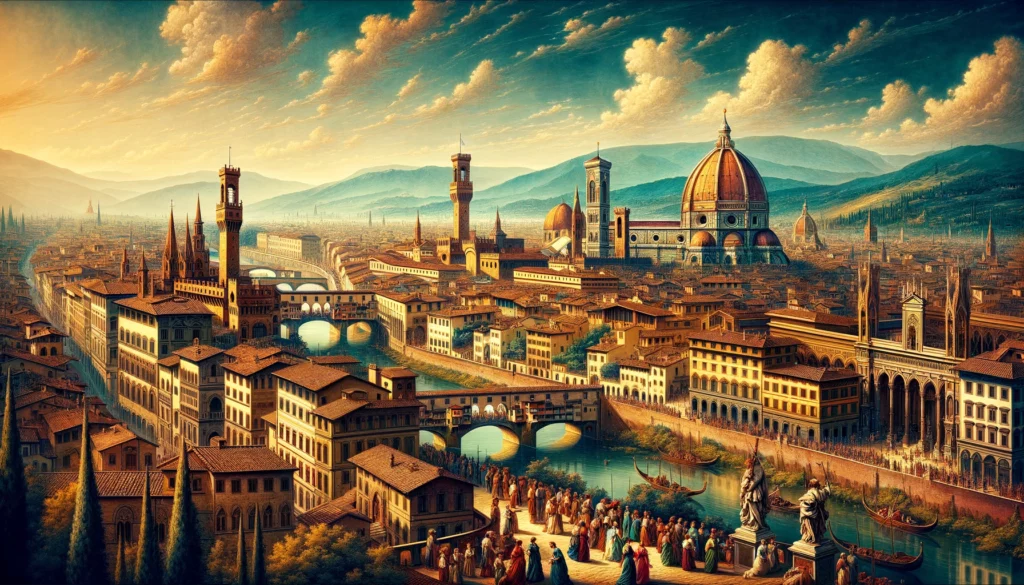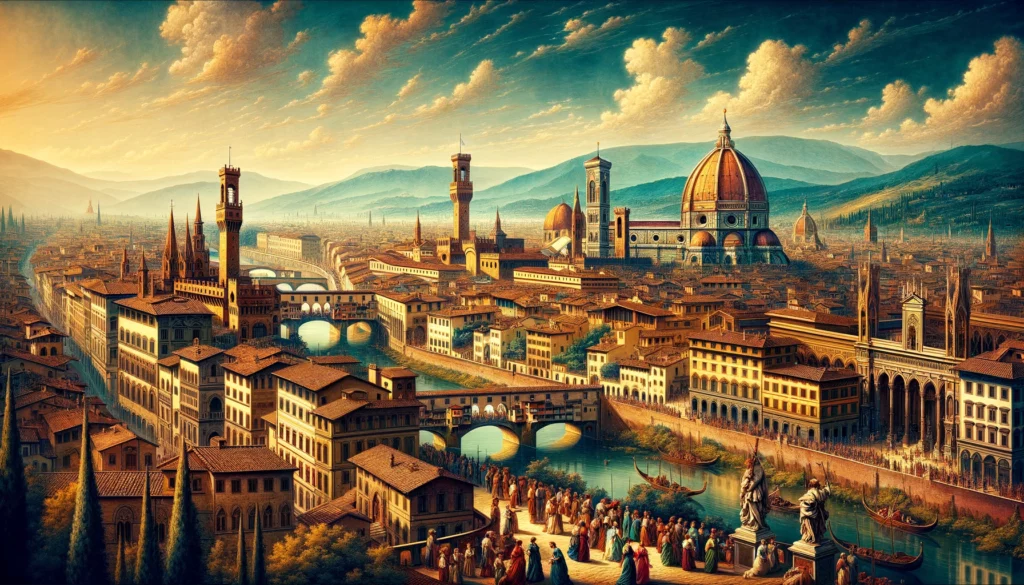Imagine a world awakening from a long slumber, eyes blinking into the brilliance of new ideas and artistic visions. This was the Renaissance, a period of extraordinary cultural and intellectual rebirth that swept through Europe from the 14th to the 17th century. But why did this remarkable era, known for reviving the glories of classical art, literature, and learning, first light its spark in Italy?
The Cradle of the Renaissance: Italy’s Unique Position
Italy, during the Middle Ages, was not a united country but a patchwork of city-states. This fragmentation played a significant role in the emergence of the Renaissance. Each city-state, be it Florence, Venice, or Rome, operated like a mini-republic, fostering a competitive spirit that fueled innovation and artistic excellence.

Moreover, Italy’s strategic location at the heart of the Mediterranean made it a hub for trade and cultural exchange. Merchants and crusaders returning from the East brought with them not only spices and silks but also knowledge. This influx of ideas and the rediscovery of ancient texts acted as a catalyst for a new way of thinking.
The Flourishing of Ideas: Importance of the Renaissance
The Renaissance marked a turning point in history. It represented a shift from the theocratic and feudal norms of the Middle Ages to a human-centered worldview. This change had profound implications. People started to focus on individual achievement and the potential of human beings to shape their own destiny. Art and literature, no longer confined to religious themes, began to explore human emotion, nature, and the beauty of the human form.

Italy’s wealth and patronage played a crucial role here. Wealthy families like the Medici in Florence supported artists, architects, and scholars, allowing them to dedicate their lives to their work. This financial backing was pivotal in producing some of the era’s most enduring works of art and significant scientific advancements.
The Birthplace of a Revolution: Why Italy?
Delving deeper into the reasons why Italy became the cradle of the Renaissance, we find a confluence of factors that created a perfect environment for this cultural rebirth.

- Geographic and Cultural Crossroads: Italy’s geographic position made it a melting pot of ideas and cultures. Its ports on the Mediterranean were gateways for trade and, importantly, for cultural exchange. Ideas from the Islamic world, including advancements in science and medicine, along with the rediscovery of Greek texts, fueled an intellectual awakening. This blend of ideas from the East and the West created a fertile ground for new ways of thinking.
- Economic Prosperity and Social Structure: Unlike the feudal systems prevalent in much of Europe, Italian city-states like Venice and Florence were bustling centers of trade and commerce. This economic prosperity created a unique social structure. Wealth was not just the privilege of the nobility; merchants and bankers amassed fortunes, challenging the traditional social hierarchy. This shift gave rise to a new class of patrons who had the resources and the motivation to invest in the arts and learning.
- The Renaissance of Classical Antiquity: Italy’s rich classical heritage was a constant source of inspiration. The ruins of ancient Rome were not just remnants of a bygone era but symbols of a glorious past waiting to be revived. This connection to the ancient world was more than geographic; it was a spiritual and intellectual link that drove the Italians to explore and revive classical art and literature.
- The Competitive Spirit of Italian City-States: The political landscape of Italy was dominated by city-states, each vying for power and prestige. This competition extended into the cultural arena. Rulers and influential families like the Medici of Florence or the Sforza of Milan sought to demonstrate their power and sophistication through patronage of the arts. This rivalry created a thriving environment for artists and thinkers, who were often provided with the means to pursue their work.
- The Advent of Humanism: Central to the Renaissance was the philosophy of humanism. This movement, which originated in Italy, placed a high value on human potential and achievement. It marked a departure from the medieval focus on the divine and the afterlife. Instead, humanists emphasized the importance of the individual and the study of classical texts as a guide to understanding life. Pioneers like Petrarch and Boccaccio laid the groundwork for a cultural revolution that valued human experience and rational thought.
- Innovations in Art and Science: The Renaissance was marked by significant advancements in both art and science. In art, new techniques like perspective, chiaroscuro, and sfumato transformed the way that artists depicted the world. These innovations, first mastered by Italian artists like Leonardo da Vinci and Michelangelo, changed the face of art forever. In science, figures such as Galileo and Vesalius challenged conventional wisdom, laying the foundations for modern scientific thought.
- The Role of the Church and the Papacy: The Roman Catholic Church, despite its conservative stance, inadvertently provided a boost to the Renaissance. The Papacy, particularly under Popes like Julius II and Leo X, was a significant patron of the arts. The Vatican became a center for artistic and architectural innovation, exemplified by works like Michelangelo’s Sistine Chapel ceiling and St. Peter’s Basilica.
In conclusion, the Renaissance began in Italy not because of any single factor, but due to a unique combination of economic, social, political, and intellectual conditions. This period of awakening in Italy not only reshaped art and culture but also laid the groundwork for the modern world.